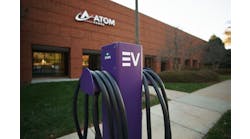Fleet Advantage recently announced results of its latest industry-wide survey addressing the gap that remains for today’s fleets in the way they use data and business intelligence to run their trucks and fleet operations. Currently, there are still fleets that aren’t leveraging data to see their total cost of ownership (TCO), many can’t use the data because it lives in disparate sources, and others have no way of sharing reports across the organization.
The online survey was presented to more than 2,000 fleet executives during April 2019. While Big Data has been increasingly used across virtually every industry, approximately 33% of respondents said they still do not have a software platform that allows them to manage their fleet’s TCO all in one place.According to the survey results, a quarter of fleet executives (26%) said their current software analysis platform does not combine financial and operations data together. Another 48% said their current platform does not provide benchmarking reports for the industry or other similar fleets. Furthermore, approximately 62% said their platform does not or they’re unsure if it produces a profit & loss (P&L) statement for each truck in their fleet.
Regarding data that fleets are receiving from their trucks, roughly a third (30%) said they do not have easy access to reporting and analysis of this data. This is critical since 80% of respondents agree that access to better reporting in an easy-to-use fashion would lead to better decision-making for their fleets.
When asked how they receive data about the trucks in their fleet, 56% of respondents said they obtain it from an electronic logging device (ELD), 50% reported they get raw onboard computer (OBC) data via a telemetric provider, while 42% stated they rely on odometer readings. Less prevalent means of receiving data include internal fleet list (36%), fuel tax documentation (33%), and maintenance & repair (M&R) software provider (25%).
Vehicle performance and M&R top the list at 52.8% each when it comes to truck data regularly received from different data sources, followed by fuel tax systems (38.9%), fuel consumption (36.1%), routing (36.1%), hours of service (HOS) (30.6%), dispatching (25%), other (22.2%), logistics systems (19.4%), driver score cards (19.4%), and payroll systems (16.7%).
For more information, visit https://www.fleetadvantage.com/.




